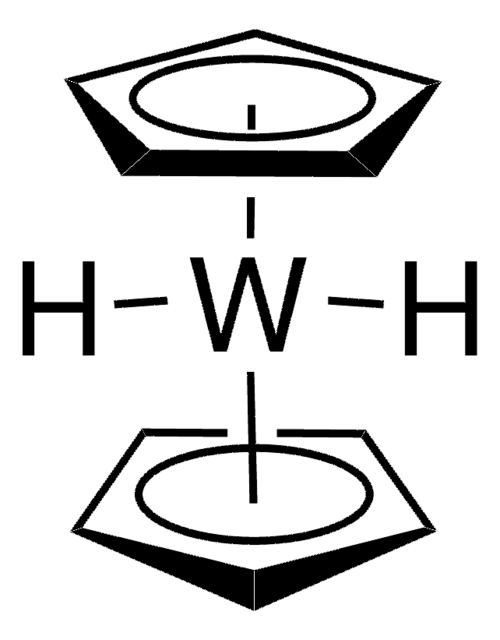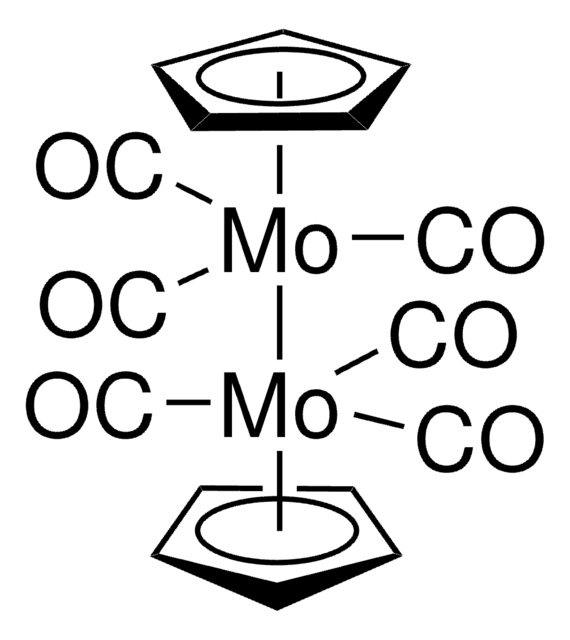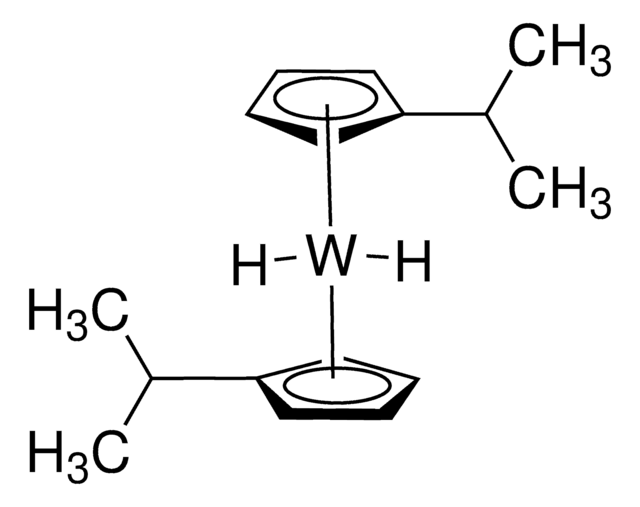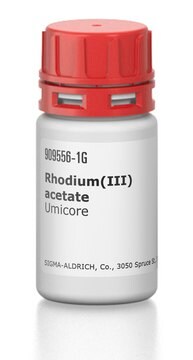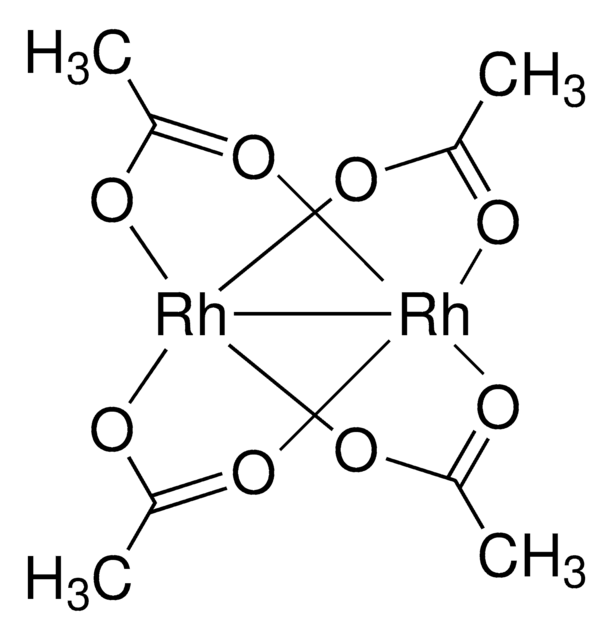256447
Bis(cyclopentadienyl)molybdenum(IV) dichloride
95%
Sign Into View Organizational & Contract Pricing
All Photos(1)
About This Item
Empirical Formula (Hill Notation):
C10H10Cl2Mo
CAS Number:
Molecular Weight:
297.03
MDL number:
UNSPSC Code:
12352103
PubChem Substance ID:
NACRES:
NA.23
Recommended Products
Assay
95%
form
crystalline powder
powder, crystals or chunks
reaction suitability
core: molybdenum
reagent type: catalyst
SMILES string
Cl[Mo]Cl.[CH]1[CH][CH][CH][CH]1.[CH]2[CH][CH][CH][CH]2
InChI
1S/2C5H5.2ClH.Mo/c2*1-2-4-5-3-1;;;/h2*1-5H;2*1H;/q;;;;+2/p-2
InChI key
YQZUTDPJTAZPQJ-UHFFFAOYSA-L
Signal Word
Warning
Hazard Statements
Precautionary Statements
Hazard Classifications
Eye Irrit. 2 - Skin Irrit. 2 - STOT SE 3
Target Organs
Respiratory system
Storage Class Code
11 - Combustible Solids
WGK
WGK 3
Personal Protective Equipment
dust mask type N95 (US), Eyeshields, Gloves
Choose from one of the most recent versions:
Already Own This Product?
Find documentation for the products that you have recently purchased in the Document Library.
Andrea Erxleben
Inorganic chemistry, 44(4), 1082-1094 (2005-04-30)
Reactions of the organometallic compound molybdocene dichloride (Cp2MoCl2, Cp = eta5-cyclopentadienyl) with the cysteine-containing peptides L-cysteinylglycine (Cys-Gly), N-acetyl-L-cysteine (AcCys), glycyl-L-cysteine (Gly-Cys), glycyl-L-cysteinylglycine (Gly-Cys-Gly), and gamma-L-glutamyl-L-cysteinylglycine (glutathione, GSH) have been studied in aqueous solution in the pH range 2-9. The dipeptides
Kate S Campbell et al.
Journal of inorganic biochemistry, 100(7), 1194-1198 (2006-03-11)
The cytotoxic effects of molybdocene dichloride (Cp(2)MoCl(2)) were investigated in V79 Chinese hamster lung cells using the micronucleus assay. Cp(2)MoCl(2) produced significant genotoxic damage whereby 0.2micronuclei/1000 binucleated cells were induced per muM of Cp(2)MoCl(2). Transmission electron microscopic analysis of thin-sectioned
Louis Y Kuo et al.
Inorganic chemistry, 44(15), 5537-5541 (2005-07-19)
Thiophosphinate hydrolysis involving P-S bond scission is desirable for the degradation of organophosphate neurotoxins, and we report the first case for such a hydrolytic process by an organometallic compound. The metallocene, bis(cyclopentadienyl)molybdenum(IV) dichloride, Cp(2)MoCl(2) (Cp = eta(5)-C(5)H(5)), hydrolyzes a variety
E Tonew et al.
Zentralblatt fur Bakteriologie, Mikrobiologie und Hygiene. 1. Abt. Originale A, Medizinische Mikrobiologie, Infektionskrankheiten und Parasitologie = International journal of microbiology and hygiene. A, Medical microbiology, infectious..., 250(4), 425-430 (1981-11-01)
In view of the fact that bis cyclopentadienyl metal dihalides are known to be anti-tumour drugs, we have investigated the antiviral activity of this type of coordination compounds. Bis cyclopentadienyl titanium dichloride (a) has shown significant antiviral efficiency in vitro
Jenny B Waern et al.
Inorganic chemistry, 43(1), 206-213 (2004-01-06)
The relative affinity of molybdocene dichloride (Cp(2)MoCl(2)) for the thiol, amino, carboxylate, phosphate(O) and heterocyclic(N) donor ligands present in amino acids and nucleotides, has been studied in aqueous solutions at pH 2-7, using (1)H, (13)C and (31)P NMR spectroscopy. Molybdocene
Our team of scientists has experience in all areas of research including Life Science, Material Science, Chemical Synthesis, Chromatography, Analytical and many others.
Contact Technical Service
